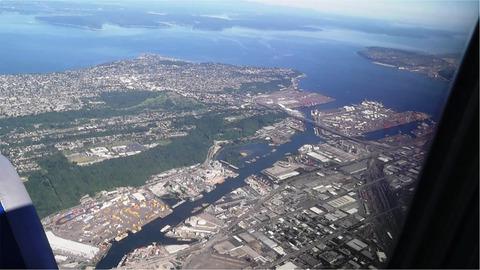当前位置:
X-MOL 学术
›
Glob. Change Biol.
›
论文详情
Our official English website, www.x-mol.net, welcomes your feedback! (Note: you will need to create a separate account there.)
Threshold responses of riverine fish communities to land use conversion across regions of the world.
Global Change Biology ( IF 11.6 ) Pub Date : 2020-06-21 , DOI: 10.1111/gcb.15251 Kai Chen 1, 2 , Julian D Olden 2
Global Change Biology ( IF 11.6 ) Pub Date : 2020-06-21 , DOI: 10.1111/gcb.15251 Kai Chen 1, 2 , Julian D Olden 2
Affiliation

|
The growing human enterprise has sparked greater interest in identifying ecological thresholds in land use conversion beyond which populations or communities demonstrate abrupt nonlinear or substantive change in species composition. Such knowledge remains fundamental to understanding ecosystem resilience to environmental degradation and informing land use planning into the future. Confronting this challenge has been largely limited to inferring thresholds in univariate metrics of species richness and indices of biotic integrity and has largely ignored how land use legacies of the past may shape community responses of today. By leveraging data for 13,069 riverine sites from temperate, subtropical, and boreal climate zones on four continents, we characterize patterns of community change along diverse gradients of urbanization and agricultural land use, and identity threshold values beyond which significant alterations in species composition exists. Our results demonstrate the apparent universality by which freshwater fish communities are sensitive to even low levels of watershed urbanization (range of threshold values: 1%–12%), but consistently higher (and more variable) levels of agricultural development (2%–37%). We demonstrated that fish community compositional thresholds occurred, in general, at lower levels of watershed urbanization and agriculture when compared to threshold responses in species richness. This supports the notion that aggregated taxon‐specific responses may better reflect the complexity of assemblage responses to land use development. We further revealed that the ghost of land use past plays an important role in moderating how current‐day fish communities respond to land use intensification. Subbasins of the United States experiencing greater rates of past land use change demonstrated higher current‐day thresholds. Threshold responses of community composition, such as those identified in our study, illustrate the need for globally coordinated efforts to prioritize country‐specific management and policy initiatives that ensure that freshwater fish diversity is not inevitably lost in the future.
中文翻译:

河流鱼类群落对世界各地土地利用转化的阈值响应。
日益增长的人类事业引起了人们对确定土地利用转换中的生态阈值的更大兴趣,超过该阈值,人口或社区就表现出物种组成的突然非线性或实质性变化。这些知识对于理解生态系统对环境退化的适应力并为未来的土地利用规划提供信息仍然至关重要。面对这一挑战,很大程度上仅限于推断物种丰富度和生物完整性指数的单变量指标的阈值,并且很大程度上忽略了过去的土地使用遗产如何影响当今的社区反应。利用来自四大洲温带,亚热带和北方气候区的13,069个河流站点的数据,我们描述了沿着城市化和农业土地利用的不同梯度变化的社区变化模式,以及同一性阈值,在该阈值之上存在着物种组成的重大变化。我们的研究结果表明,淡水鱼群落对流域城市化水平很低(阈值范围:1%–12%)敏感,但农业发展水平始终较高(且变化较大)(2%–37),这显然具有普遍性。 %)。我们证明,与物种丰富度的阈值响应相比,鱼类群落组成阈值通常发生在流域的城市化和农业水平较低的地方。这支持以下观点:特定分类群的综合响应可能更好地反映针对土地利用开发的组合响应的复杂性。我们进一步揭示,过去土地利用的幽灵在调节当今鱼类群落对土地利用集约化的反应中起着重要作用。美国子盆地过去土地使用变化的比率更高,其当前门槛更高。社区组成的阈值响应(例如,我们在研究中确定的响应)表明,需要进行全球协调的努力,以优先考虑针对特定国家的管理和政策计划,以确保将来不会不可避免地失去淡水鱼的多样性。
更新日期:2020-08-11
中文翻译:

河流鱼类群落对世界各地土地利用转化的阈值响应。
日益增长的人类事业引起了人们对确定土地利用转换中的生态阈值的更大兴趣,超过该阈值,人口或社区就表现出物种组成的突然非线性或实质性变化。这些知识对于理解生态系统对环境退化的适应力并为未来的土地利用规划提供信息仍然至关重要。面对这一挑战,很大程度上仅限于推断物种丰富度和生物完整性指数的单变量指标的阈值,并且很大程度上忽略了过去的土地使用遗产如何影响当今的社区反应。利用来自四大洲温带,亚热带和北方气候区的13,069个河流站点的数据,我们描述了沿着城市化和农业土地利用的不同梯度变化的社区变化模式,以及同一性阈值,在该阈值之上存在着物种组成的重大变化。我们的研究结果表明,淡水鱼群落对流域城市化水平很低(阈值范围:1%–12%)敏感,但农业发展水平始终较高(且变化较大)(2%–37),这显然具有普遍性。 %)。我们证明,与物种丰富度的阈值响应相比,鱼类群落组成阈值通常发生在流域的城市化和农业水平较低的地方。这支持以下观点:特定分类群的综合响应可能更好地反映针对土地利用开发的组合响应的复杂性。我们进一步揭示,过去土地利用的幽灵在调节当今鱼类群落对土地利用集约化的反应中起着重要作用。美国子盆地过去土地使用变化的比率更高,其当前门槛更高。社区组成的阈值响应(例如,我们在研究中确定的响应)表明,需要进行全球协调的努力,以优先考虑针对特定国家的管理和政策计划,以确保将来不会不可避免地失去淡水鱼的多样性。



























 京公网安备 11010802027423号
京公网安备 11010802027423号